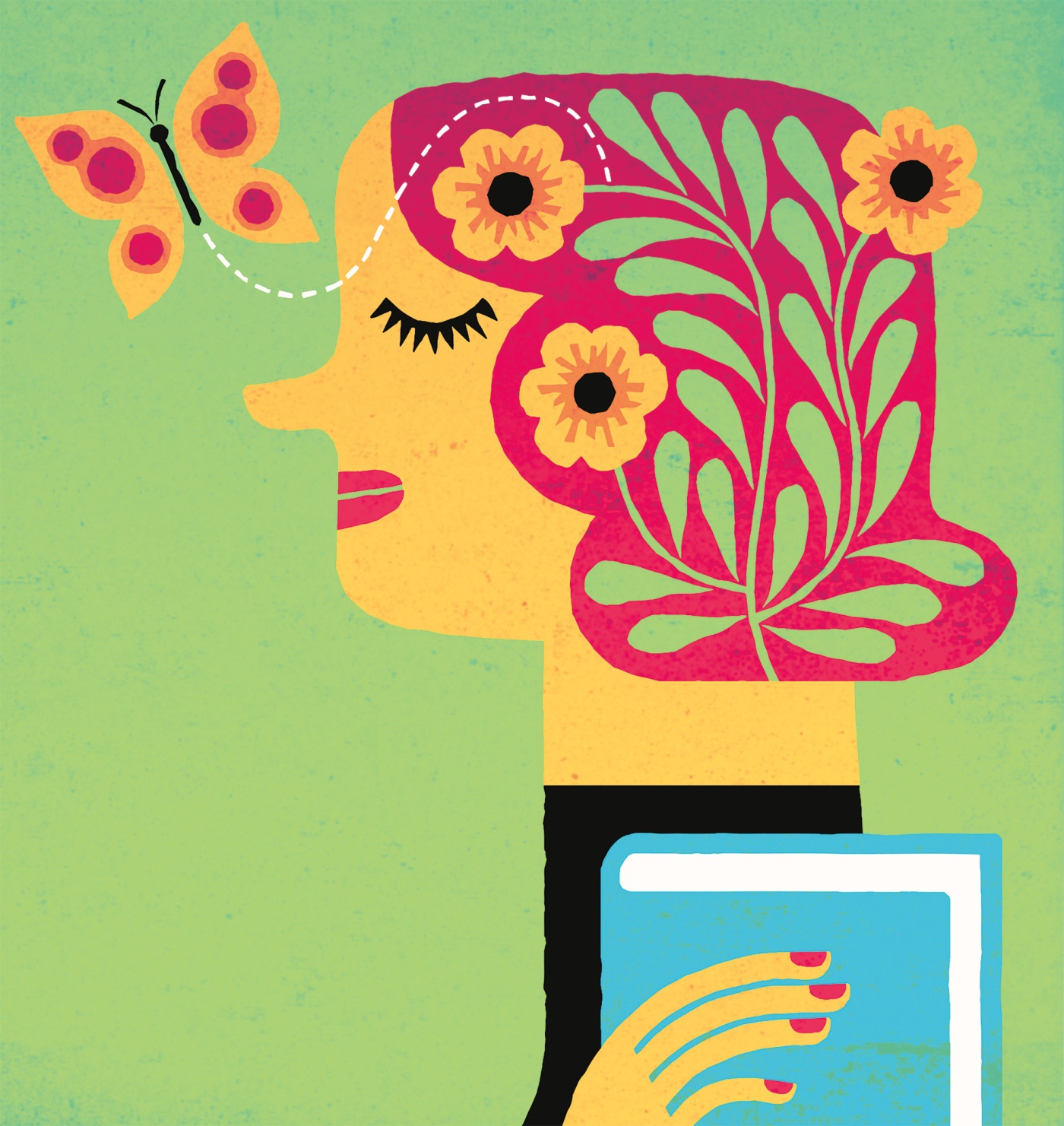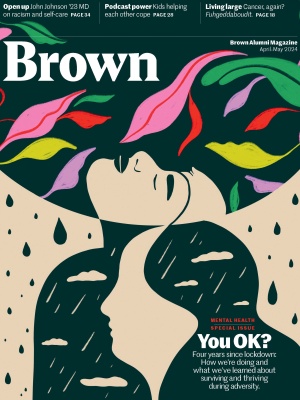The Good Life
A course on happiness gets mobbed
Last year more than 400 students, half of them seniors, enrolled in a new religious studies course, RELS0010: Happiness and the Pursuit of the Good Life. What was the draw?
“This feels like it’s about a topic that’s going to matter for the rest of my life,” says Benjamin Glanz ’23.

“As the semester is wrapping up and I’m leaving college,” adds Sarah Reichheld ’23, “I’ve been thinking about, okay, what are the components of my life that make me happy and what decisions do I want to make...in order to have conditions that are better set up for my well-being?”
Michael Satlow, a professor of Judaic and religious studies, says his idea for the class was born out of the pandemic. “The students were more brittle, less resilient, and having a hard time,” he says of students returning to in-person classes. As Satlow developed the course, he saw parallels between contemporary positive psychology research and ancient religious texts. “They’re both grappling with the same perennial issues,” he says, “using different idioms and different frameworks.” He first asks students to engage with fundamental questions: What is happiness? What is the good life? And do the two meet? Then they dive into how we’re wired, with several texts using the metaphor of an elephant and rider to explain the mismatch between what we know is best for us and what we actually do. Trying to dominate your elephant—the subconscious, instinctive desires—doesn’t work, Satlow says. “If you try to say no, no, no to everything, eventually your elephant breaks out and rebels.” That’s why, to be a successful rider, “rather than denying, it’s nudging. You’re retraining, redirecting.” The semester wraps up on transcendence—asking not only whether there is “something beyond us,” but whether “creating that mental state, whether or not we genuinely believe in anything religiously, is beneficial for achieving the good life.”
Another draw was Satlow’s alternative grading plan in which students could suggest their own grade—providing they hit stringent benchmarks around attendence, class readings, assignment deadlines, even the restriction of electronic devices. He explains he wants to create a space “where you learn without fear of failure; even welcome failure as providing an opportunity to learn. I want serious engagement for its own sake in a rigorous but supportive atmosphere.”
For the course’s second iteration, in spring 2024, Satlow added a weekly discussion section; for practical reasons, that capped attendance at 300. The class filled up instantly. Students begin each session with a quiet focus exercise and a digital survey; as they leave, they fill out an “exit ticket” with takeaways and lingering questions, which Satlow uses to inform future coursework.
The course touched on “really important things that you don’t learn in other classes,” Glanz says. “You learn a lot of technical skills, or econ, or political science, but you don’t really learn much about how to be a human being.”




